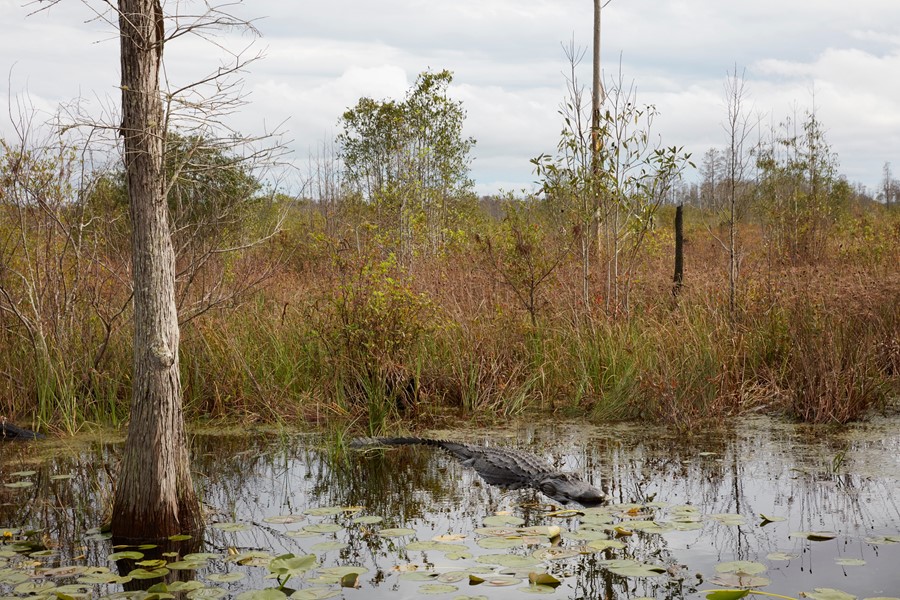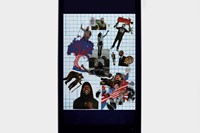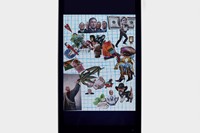Photographer Catherine Opie continues her exploration of Americanness with two new series: video collages with images clipped from magazines, and photographs of swamps in the American south
“Have you done a cross-country American road trip yet?” asks Catherine Opie over the phone from her Los Angeles studio to New York, where she recently opened her new exhibition, Rhetorical Landscapes, at Lehmann Maupin. Documenting a land as vast as it is complicated has been the artist’s own personal road trip, spanning her three-decade long career. Whether zealous crowds at Barack Obama’s 2008 inauguration, teenage football players in oversized shoulder pads or, most famously, lesbian comrades and lovers, the common thread running through Opie’s images has been America. Her most recent destination, and the subject of her current exhibition, is the Okefenokee Swamp, located between Florida and Georgia. Known as the largest blackwater swamp in North America, the wetland appears in Opie’s dense photographs just like the rest of the American south: gothic, inconspicuous, and alluring. She wants the viewer to see the beauty in marshes beyond the murkiness because, she says, “the real mucky stuff is the country’s political rhetoric”.
Opie’s swamps, however, are deep. Trump’s frequent use of the metaphor “draining the swamp” is engulfed in there, as well as the current environmental crisis and the area’s painful racial history. The large-scale photographs of swamps are immersive, with details of “life” amid seemingly deteriorating natural landscapes – an owl might gaze at the camera, or an alligator might slyly emerge to the surface. In Untitled #6 (Swamps) (2019), which is the only shot Opie did not capture from the tip of a tourist boat, subtle rain drops wash the serpentine swamp, contoured by lush willows and common reeds. The show’s other series, Political Collages (2019), includes vertical life-size screens which slowly stream images cut out from magazines. Untitled #1 (Political Collage) shows numerous guns accumulating at the bottom of the screen, over a blue grid backdrop which the artist hand drew for each animation.
Before Opie returns to the southern swamps once the pandemic withdraws, she spoke to AnOther about observing the changing times through her lens and why she has been cutting pictures out of magazines for over two years.
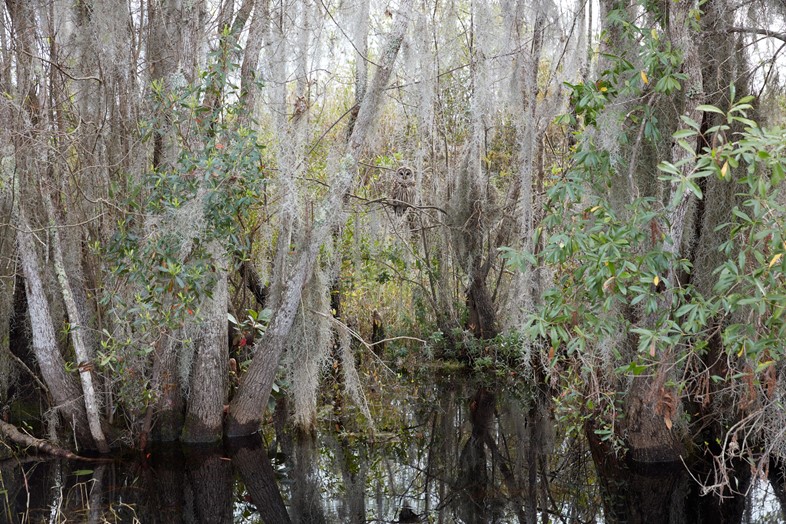
“I am not done with photographing the swamps yet. My next trip will be to Slidell, Louisiana where swamps are dotted with beautiful cypress trees. Not another exhibition, but a book is my ultimate plan for the series. Swamps are huge sites of ecosystems full of metaphors, especially given our political climate in this country and the world. I came across the Okefenokee when I visited Florida to teach and started thinking about the Trumpian language. Swamps will not be drained, but in five years they will be flooded. Historically, they also meant risk for those who had to swim through them to escape slavery. I am interested in thinking about places and phenomena we assume we all know, either swamps or something as cliché as sun rise. For the series Twelve Miles to the Horizon, I had travelled from Busan, Korea to Long Beach, California on a container ship to daily capture sun rise and sun set. Waiting for the sun to reappear for ten days was similar to winding a clock everyday.
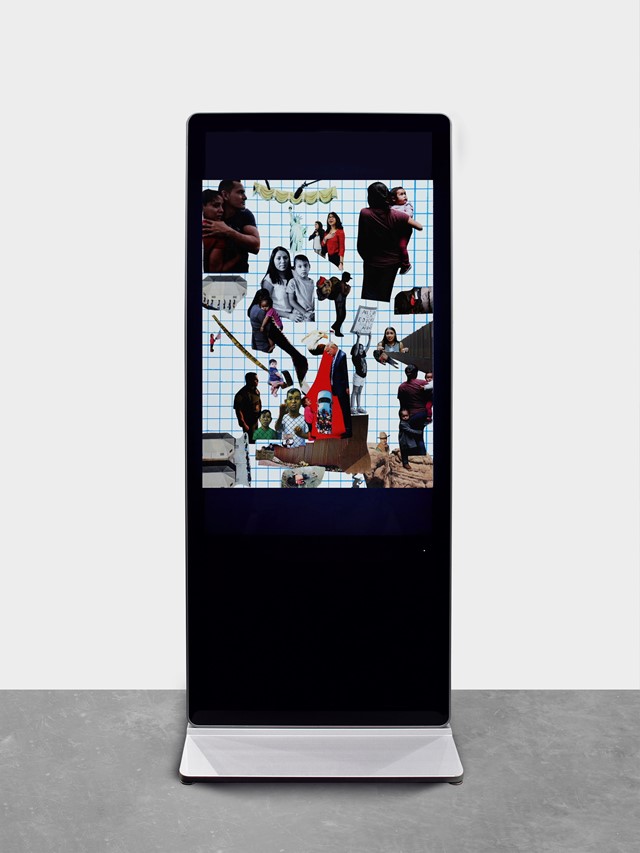
“Freeways, Elizabeth Taylor’s house, or an imaginary house carved on my back, places do find me, given what’s happening in my life and around me. My interest lies in things we consider iconic within the lexicon of our ability to look at them, but I like to switch the expectations on their iconic statuses. A glamorous photographer would be expected to photograph Taylor’s house, for example, but through our mutual accountant, I was given access to her house three months before and after she passed, which led to the series 700 Nimes Road (2010–11). My previous exhibition, The Modernist, at Lehmann Maupin included a film, in which the artist and my frequent collaborator Pig Pen set LA’s iconic Modernist buildings on fire, in addition to collages inspired by the film. Besides pointing out my inner architect that wants to get out, the exhibition prepared me for the video collages in the current show. Speaking of Modernism, I drew the video collages’ blue grids by hand to challenge the rigid geometry of Bauhaus collages.
“Political Collages come out from boxes of magazines I’ve been collecting for over two years. As a political junkie, I started out with cutting through the Los Angeles Times, which provided the source for the collages in The Modernist. I wasn’t sure about the newsprint aesthetic for videos, so I switched to magazines and started cutting through a range of images with help from my son. We clipped a photograph of Mike Pence or a puppy in sheriff outfit from Country Living. I wanted the political representation to remain tongue-in-cheek and include the kitsch side of the American culture. An important influence here is Terry Gilliam’s Flying Circus animations in Monty Python, which I grew up watching. I’ve produced many series since my work about the queer and S&M communities in the early 90s when Aids was decimating my friends. As much as I focus on today’s social and political urgencies in the videos, traces from my queerness are visible in images of Trump turning into a drag queen with gold heels or Pence with a marijuana leaf.”
Catherine Opie: Rhetorical Landscapes is at Lehmann Maupin, New York until September 26, 2020.
